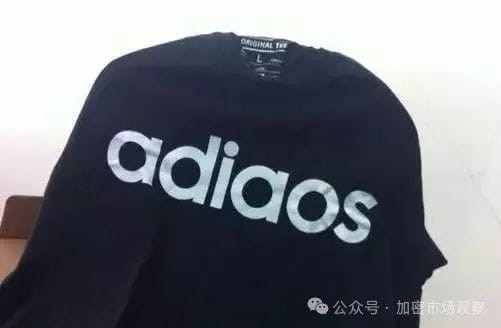
Recently, some people from traditional circles always come to me for advice on crypto asset allocation, but my reply to everyone is different.
Let me clarify here: It’s not that I always change my mind, but that asset allocation preferences vary from person to person.
If you buy financial products or open a stock account, you will usually fill out a risk assessment form, which probably looks like this:

Then the assets corresponding to each grade are as follows:

In fact, it is a bit nonsense: debt investment risk is low, and stock risk is high.
Local government bonds are considered low risk, AA+ bonds hahaha (if something goes wrong, the rating will be lowered immediately, not considered AA+)
Tencent's stock is considered a Southbound Stock Connect stock and is considered R4 medium-high risk, which is higher than all GEM stocks.
So you get it?
In my opinion, true risk assessment is based on specific assets. It is also a Hong Kong Stock Connect stock. The risk of Tencent, a company with good cash flow, is definitely different from other stocks.
According to this logic, I will sort out what the actual ratings of various assets should be:
The recognized store-of-value asset in the crypto community is Bitcoin. In the traditional financial field, some people may think of it as gold or U.S. Treasury bonds.
This concept is different for everyone. For example, in war-torn places like Ukraine, or in places with serious inflation like Argentina, most people still choose USDT as a store of value.

The rate of return of many very large asset management companies is in single digits because of their large capital base. BlackRock Asset Management, the world's largest asset management company, has a scale of one billion, and most of its investment targets are value storage (anti-inflation) assets, such as U.S. Treasury bonds. Some people think that real estate or land/gold are storage of value assets.
Currently, many people in the crypto circle use Bitcoin or Ethereum to calculate their assets, which is almost equivalent to treating Bitcoin or Ethereum as a value storage asset. These are common among old OGs in the crypto circle.
Many leading crypto investment institutions are also Bitcoin-based, and the investment return rate is calculated in Bitcoin. If they do not outperform the increase of Bitcoin, they will be considered as losses.

Therefore, the consensus of Bitcoin as a value storage asset can also be reflected in the position ranking. Except for exchanges, which are a collection of retail investors, other major holders are also sovereign governments and large asset management entities.
In the traditional financial industry, Buffett is regarded as a representative figure of value investing.
But Buffett's asset management scale has just exceeded one trillion US dollars.
Compared with BlackRock, a monster worth ten trillion dollars, it’s not that Mr. Buffett is not good enough, but that the targets of value investment are usually stocks, and the carrying capacity of such assets is only so large.
Investors who generally prefer this type of asset pursue not only anti-inflation, but also additional income. For example, Buffett's long-term return is about 13% annualized. Although not as high as Bitcoin, it is much higher than U.S. Treasury bonds.

In the encryption industry, exchanges and mining can be regarded as having stable cash flow. Especially as the exchanges develop with the development of the encryption ecosystem, it can be said that they can collect money steadily. However, the output of Bitcoin mining is becoming increasingly scarce, and it may depend on the explosion of the Bitcoin ecosystem.
In the future, as the technical facilities for encrypted payments become more and more complete, it is not ruled out that more products based on cash flow will be released.

Price-to-dream ratio is a concept I made up, which is that market value is related to the size of the narrative dream.
As ordinary people, most property owners may own a house, or buy a national bond or a fixed deposit as a guarantee.
The money that can really be invested is only tens of thousands of U (this money is often used), and the rate of return from value investment cannot satisfy the appetite.
Many coins that have emerged recently, such as SOL/MINA/TIA, are still in the dream market stage. In the future, if their boasts can be gradually realized, the market value will be stable.
However, the market value of SOL/MINA/TIA is already very high. I don’t know how long this market value can be maintained.

Only this type is likely to have a large increase in the future. In the real world, it can be Tesla 10 years ago/Tencent 20 years ago.
Especially for Tesla, the stock price kept rising when it was not profitable before (because the imagination of the market space is infinite). On the contrary, after making profits recently, the stock price is still fluctuating sideways.

As long as the development trend of these assets with dream market rates continues to improve, the prices will soar; but after realizing the awesomeness they boasted at the beginning, they will return to rationality.
It’s not that Bitcoin was a store of value asset to begin with. Bitcoin was a copycat at the beginning because no one recognized its value.
When the Bitcoin consensus expands from a small circle to a larger group of people, it enters the market-dream rate expansion stage.
Now that Bitcoin spot ETFs have been approved, sovereign governments are holding on to Bitcoin. Although there may still be a lot of room for growth in the number of people who agree on this asset, judging from the exponential growth trend, it may have passed its peak growth period.

Not every boasted project will come true. For example, Sol is very interesting. It once had the potential to replace Ethereum with the support of FTX. However, with the collapse of FTX, the dream was shattered. But judging from this year’s trends, the awesomeness of this dream seems to be blowing up again~
If anyone has the ability to be optimistic about an asset at the market rate stage and get the leverage to realize it, then he or she can have financial freedom.
Don’t think that people with less money have less ability to resist risks. I think it’s the opposite: Diaosi has the strongest ability to resist risks.
Because the rich already have a lot of money, it is enough for them to pursue a stable rate of return (it is difficult to find corresponding high-yield assets with large asset sizes)
On the other hand, diaosi mainly rely on selling their labor force to maintain their living expenses. They don’t have much money in their pockets. If they lose all their money, they go to work to make money. Instead, you can bear the risk of losing all your principal (you don’t have much money to begin with)
Where is this year's high growth market rate?
Due to the Bitcoin halving this year and the opening up of BTC to institutional investors, the next high-growth market-to-market rate project is likely to be here.
Right now I have a friend who provides deployment services for the Babylon test server:
Previously, the revenue from deploying SOL/MINA/TIA test servers was tens of thousands of U. It is difficult for Bitcoin to increase by another 200 times~
If you are interested please leave a message~#内容挖矿
